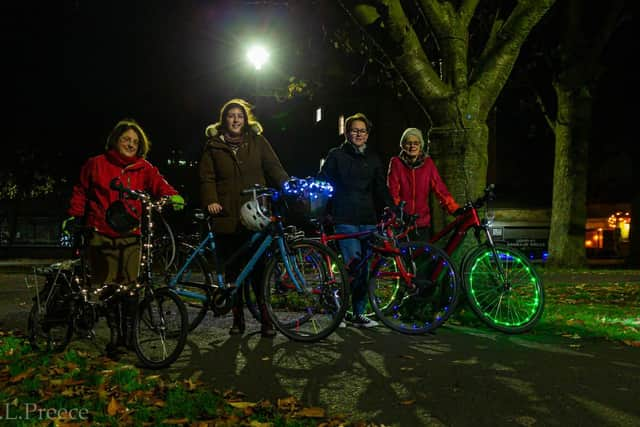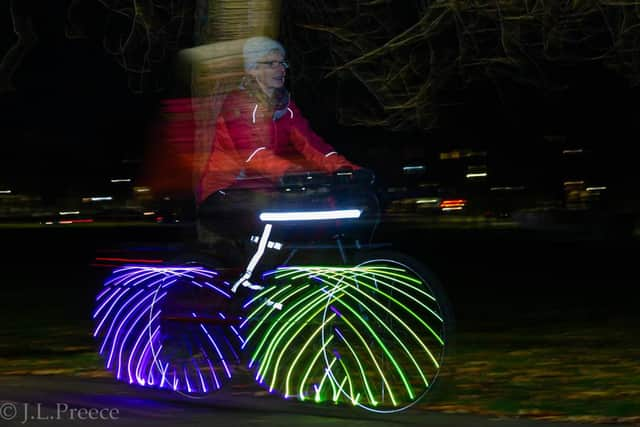Edinburgh women highlight need for safe cycling routes after dark
and live on Freeview channel 276
The event, on Friday, was designed to put pressure on Edinburgh City Council to make cycle routes around the city safer, particularly for women and girls.
Kirsty Lewin of Spokes Porty, one of the organisers of the ride, said: “We welcome the Council’s ambitious plans for improving cycling conditions in the city, and the forthcoming work on safety for women in public spaces.
Advertisement
Hide AdAdvertisement
Hide Ad"However, Edinburgh’s current cycling infrastructure is poor and not fit for purpose, particularly for women. Improvements are far too slow.
"The Council must prioritise projects that enable women and girls to feel safe and comfortable, and to travel with confidence.”
The ride, which was held to coincide with the end of the UN’s 16 days of Activism against Gender-Based Violence, lasted about an hour and followed a short route around the city centre, starting at Middle Meadow Walk at 7.30pm. Cyclists dressed up and covered their bikes in colourful lights for the event.
Organisers, who support recent Cycling by Design guidance from Transport Scotland, want safe and comfortable cycle infrastructure which is protected from traffic – or off-carriageway - on well-lit direct routes. Routes which have “natural surveillance” – such as busy streets – are preferred.


Advertisement
Hide AdAdvertisement
Hide AdIt is believed more women would take up cycling if they felt safer doing so.
Emily Wood, who lives in Portobello and works in Inverleith, said: “I am not a very confident cyclist, so I much prefer routes I am familiar with.
"I am nervous of cycling along dark, lonely and convoluted routes and I would never cycle on a busy road. My balance isn’t great, so I need wide protected cycle lanes.
"I’d like to cycle more to work and for other trips in the city, but the infrastructure isn’t there to support me, especially in the winter.”


Advertisement
Hide AdAdvertisement
Hide AdDr Caroline Brown from the Urban Institute at Heriot Watt University said that off-road paths should not count as suitable cycle infrastructure because they are not safe for everyone to use at all times.
She said: “Male violence doesn’t just affect the women victims, it affects the behaviour of all women who weigh the risk of every decision they make.”
Campaigners claim that women have to decide whether busy roads and junctions are preferable to isolated, off-road paths after dark.
Figures from sustainable transport organisation Sustrans, which were published in 2017, show that women make up 37 per cent of cyclists in the city.
Advertisement
Hide AdAdvertisement
Hide AdDuring the COP26 climate summit last month in Glasgow, discussions were held to highlight the idea that making cities less dangerous for women by developing safer, well-lit cycling and walking routes went hand-in-hand with fighting climate change.
Reducing the number of cars on the roads and replacing them with well connected cycle routes would be a push towards equality by helping to make more people, women and girls in particular, feel safer and more confident on their bikes, delegated heard.
A message from the Editor:Thank you for reading this article. We're more reliant on your support than ever as the shift in consumer habits brought about by coronavirus impacts our advertisers.
If you haven't already, please consider supporting our trusted, fact-checked journalism by taking out a digital subscription.
Comment Guidelines
National World encourages reader discussion on our stories. User feedback, insights and back-and-forth exchanges add a rich layer of context to reporting. Please review our Community Guidelines before commenting.
